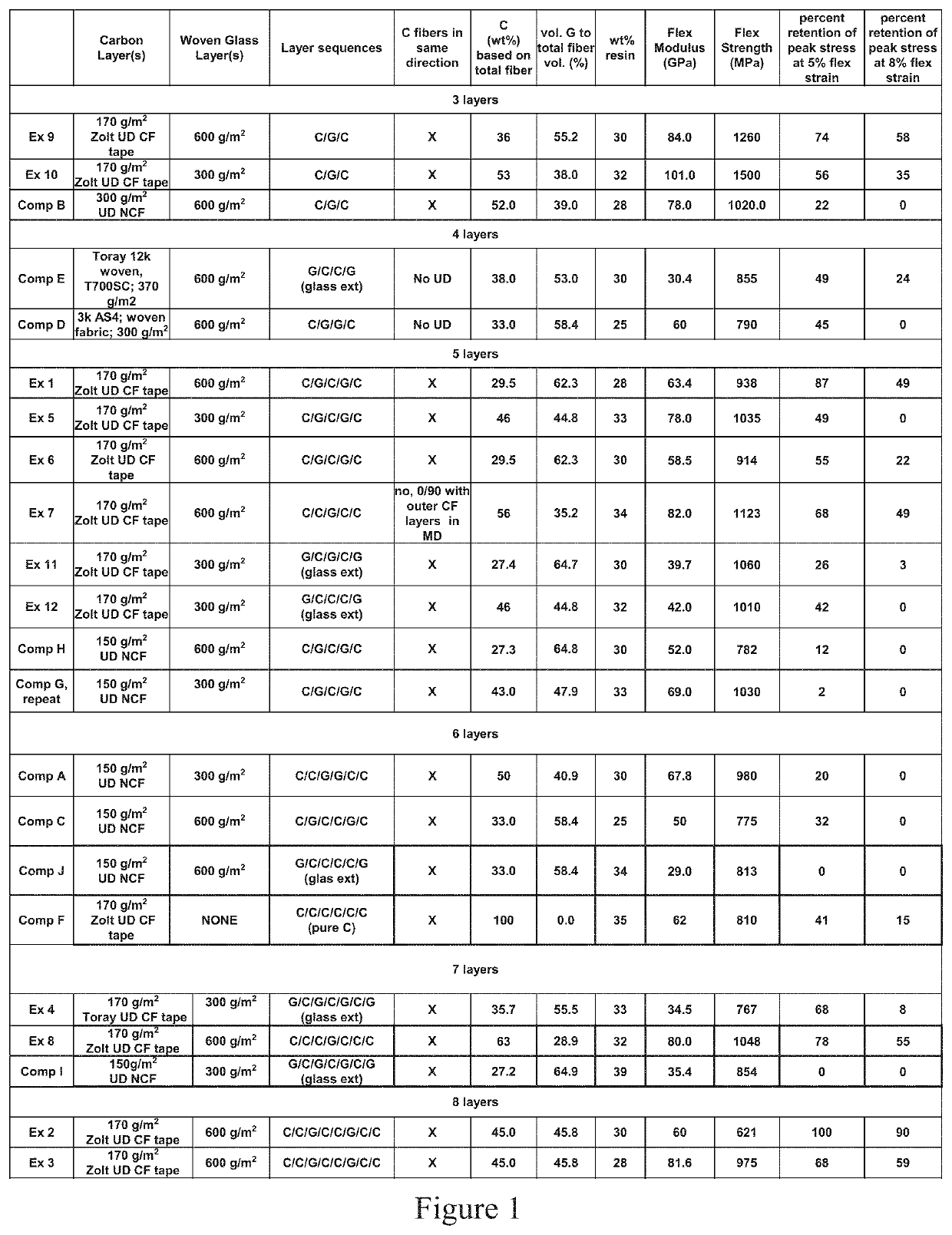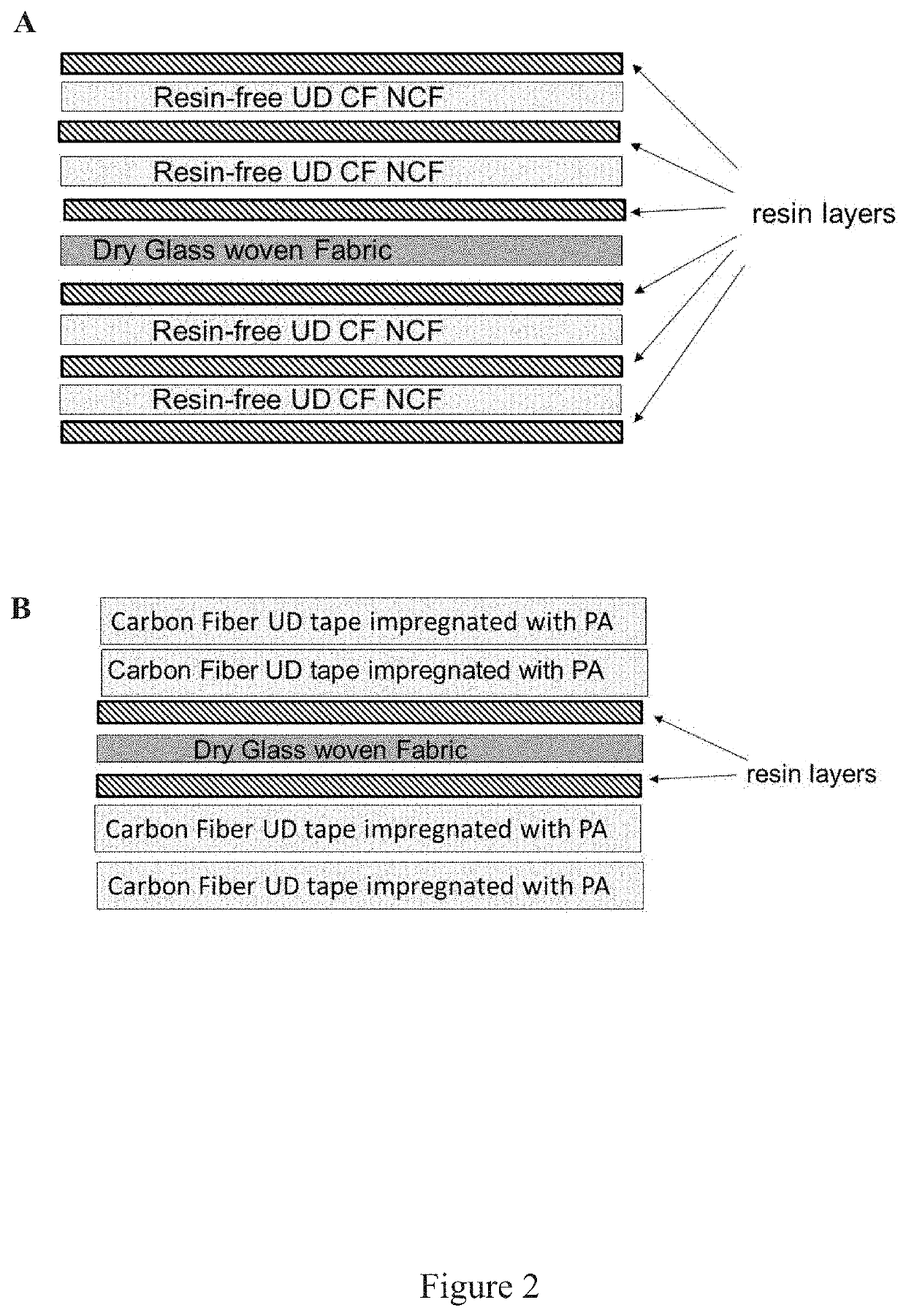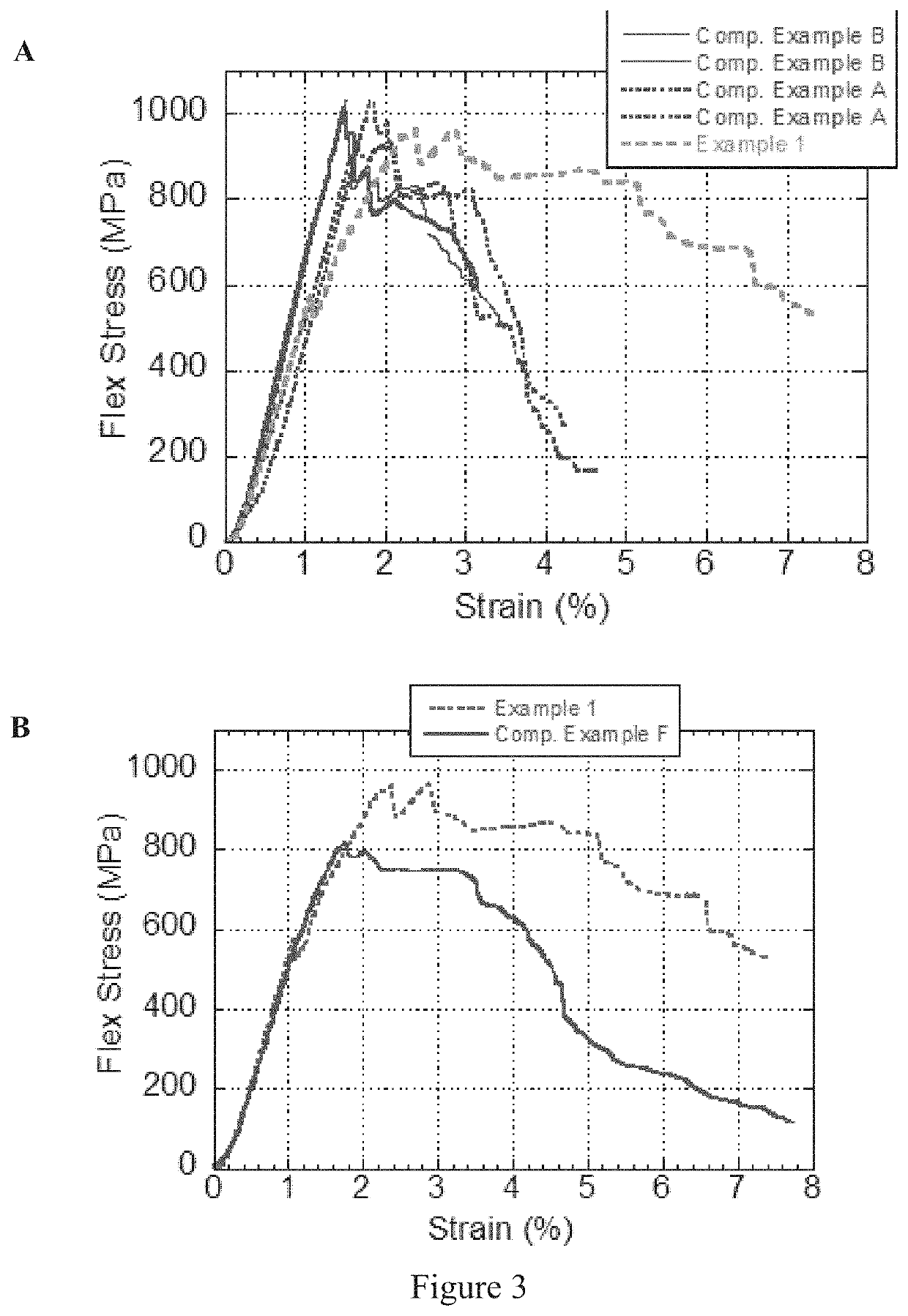Glass and carbon fiber composites and uses thereof
a technology of carbon fiber and composites, which is applied in the field of glass fiber (gf) and carbon fiber (cf) composites, can solve the problems of high cost of use alone, low load retention of composites, and high brittleness, and achieves high energy absorption ability, high stiffness, and high resistance to ruptur
- Summary
- Abstract
- Description
- Claims
- Application Information
AI Technical Summary
Benefits of technology
Problems solved by technology
Method used
Image
Examples
example 1
of Composite Structures of the Invention and Comparative Examples
[0109]Different composite structures of the invention were prepared according to sequence as described in FIG. 2A and compared to standard composites prepared according to a sequence as described in FIG. 2A.
Composite of the Invention Ex. 1-12
[0110]Pre-impregnated UD carbon fiber tapes were used without the addition of any further PA66 film layer adjacent to the pre-impregnated UD carbon fiber tapes. Film layers of PA66 were added adjacent to the layers of resin-free glass fabric so this fabric could be impregnated during thermal pressing or lamination as described herein.
example 2
aracterization of the Inner Structure of Composites of the Invention as Compared to Comparative Examples
[0134]Structures of the composites of the invention were analyzed by microscopy of cross sections of a laminate of Example 1 as compared to a laminate of a composite from comparative example (Comp. Ex. A). FIG. 4 presents photographs of cross-sections as observed by microscopy described above.
[0135]As can be seen on FIG. 4A, more resin is observed within CF regions and less within the GF layer (5B) in the laminate of the composite of the invention. The cross section of a laminate of the invention can be schematized as represented on FIG. 5B. In general, for laminates of the invention, within the CF bundles between 43 and 49 vol % CF are observed as compared to comparative examples where between 54 and 66 vol % CF are observed in the CF regions (FIG. 5A). In FIGS. 4 and 5, the total resin weight percent within the laminates are about 30 wt %, and the total weight percent carbon rel...
PUM
| Property | Measurement | Unit |
|---|---|---|
| weight fraction | aaaaa | aaaaa |
| weight fraction | aaaaa | aaaaa |
| volume fraction | aaaaa | aaaaa |
Abstract
Description
Claims
Application Information
 Login to View More
Login to View More - R&D
- Intellectual Property
- Life Sciences
- Materials
- Tech Scout
- Unparalleled Data Quality
- Higher Quality Content
- 60% Fewer Hallucinations
Browse by: Latest US Patents, China's latest patents, Technical Efficacy Thesaurus, Application Domain, Technology Topic, Popular Technical Reports.
© 2025 PatSnap. All rights reserved.Legal|Privacy policy|Modern Slavery Act Transparency Statement|Sitemap|About US| Contact US: help@patsnap.com



